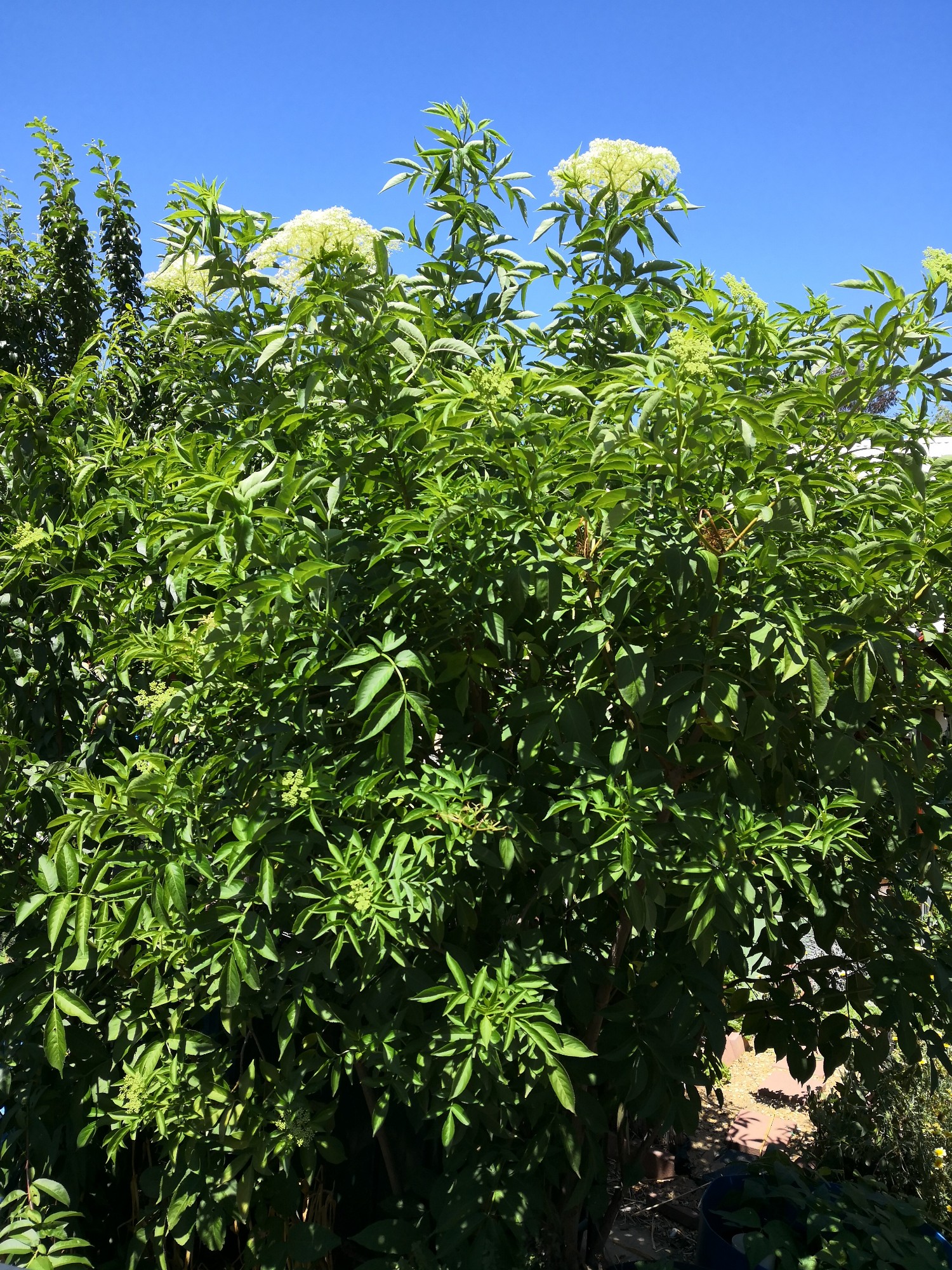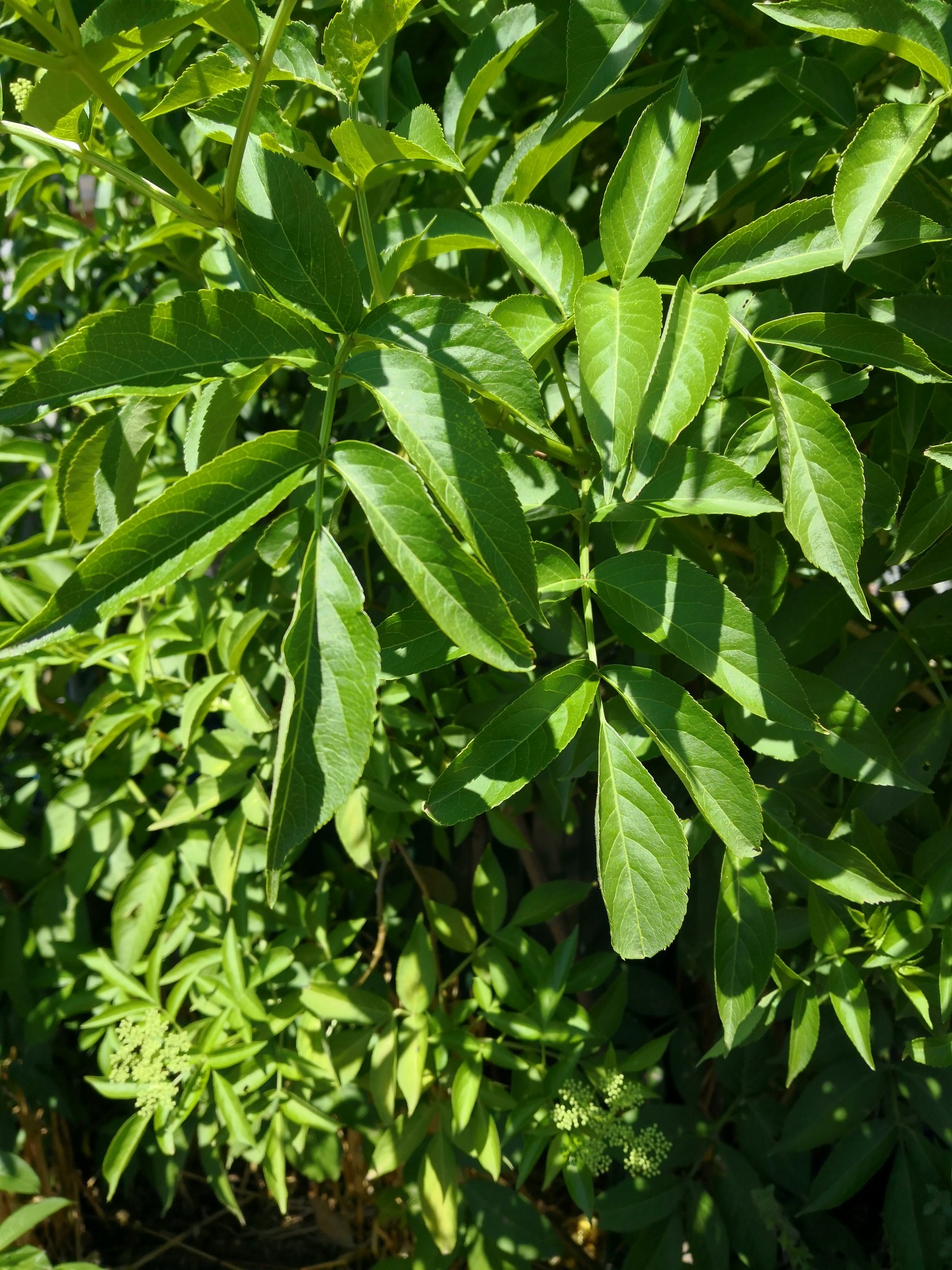
Common names: Elder, Elder Tree, Elder Berry
Taxonomic name: Sambucus nigra
Family: Adoxaceae
Uses: Colds, minor wounds, constipation, skin complaints
Area of origin: Europe
Warnings: The fresh bark and roots contain toxic cyanide compounds. Unripe berries contain lectins which can cause stomach upsets.
There was a saying in old England that said ‘if a village has an Elder tree nearby, nobody needs to get sick’. That’s a fairly big ask for a tree, but when you look at the range of ailments Elder can help resolve, it’s quite believable.
Elder trees have a long history in folklore, being symbols of regeneration because of the ease of striking cuttings and their tolerance of a wide range of conditions. These associations go back to Greek, Roman, Britons and Celts and most European countries have some story about them. It is even said that if you sleep under an Elder tree, you can see that fairy realm (maybe that’s why our rabbits are so happy).
Elder trees grow easily from cuttings – when ours came from a friend, it was just a branch which we simply stuck it in the ground over Winter and were rewarded with new leaves in Spring.
We chose to place our Elder right smack in the middle of our garden because of its legion of folkloric and healing properties and also because they have a reputation of being a ‘nursery tree’ that means that anything grown near them will grow better. Our Sicilian Nectarine seems to think this is true!
Elder flowers


A cup of hot Elder flower tea will make you sweat and help to rid you of a sore throat or cold if you take it when you first see the signs that one is plaguing you. In this sense, its like Yarrow, a ‘diaphoretic’. It will force a sweat and help break the cycle of the cold.
Elder flowers are an anti-inflammatory too and also contain a natural refrigerant that will help reduce fevers. My favourite cold remedies are hot teas made from a combinations of of Elder Flower, Yarrow, Mint, Catnip and honey – it only takes one or two of those to see me right.
Elder flowers have an affinity for the skin too. Elder flower ointment is wonderful for skin injuries such as cuts and burns. The oil is good for dry, chapped skin.
Elder tree leaves

Elder leaves are used externally for minor wounds. Their anti-inflammatory and anti-microbial actions, plus tannins to stop the bleeding make the leaves almost a first aid kit in themselves.
Elder Berries

Elder berries are best used dried to, although the juice is quite popular. They are useful in colds and flu because they have an antiviral action and work as a decongestant. They are a mild laxative too, so use them in cases of mild constipation.
Elder tree bark
As mentioned earlier on this page, every part of an Elder tree has a use and those uses vary considerably between parts. I only include the bark here to emphasize that point.
Fresh Elder bark is toxic. It contains cyanide compounds.
Elder bark needs to be aged for at least a year so that the toxic cyanide compounds break down to a reasonably safe level. Once this is done, it is a powerful ‘cathartic’. That means it will clean out your bowels strongly and quickly. Don’t take aged Elder bark unless you are near to a toilet or a bush or somewhere to hide when the inevitable results hit you.
Elder tree roots
Elder tree roots were used as a laxative and to ‘purge’ the patient (victim?). Their use is obsolete and one can get the same effects from aged bark.
How to get your own Elder Tree for free
Propagating Elder Trees from cuttings is so easy. Check out this post if you’re interested in growing one at your place.
Note: Parts of an Elder tree contain cyanogenic glycosides which can break down to release cyanide. This is especially true of the bark. The bark, unripe berries and seeds contain small amounts of substances known as lectins, which can cause stomach problems you eat too much. Elder trees are extremely useful but should be used medicinally with caution.
Download this page as a pdf (coming soon)
